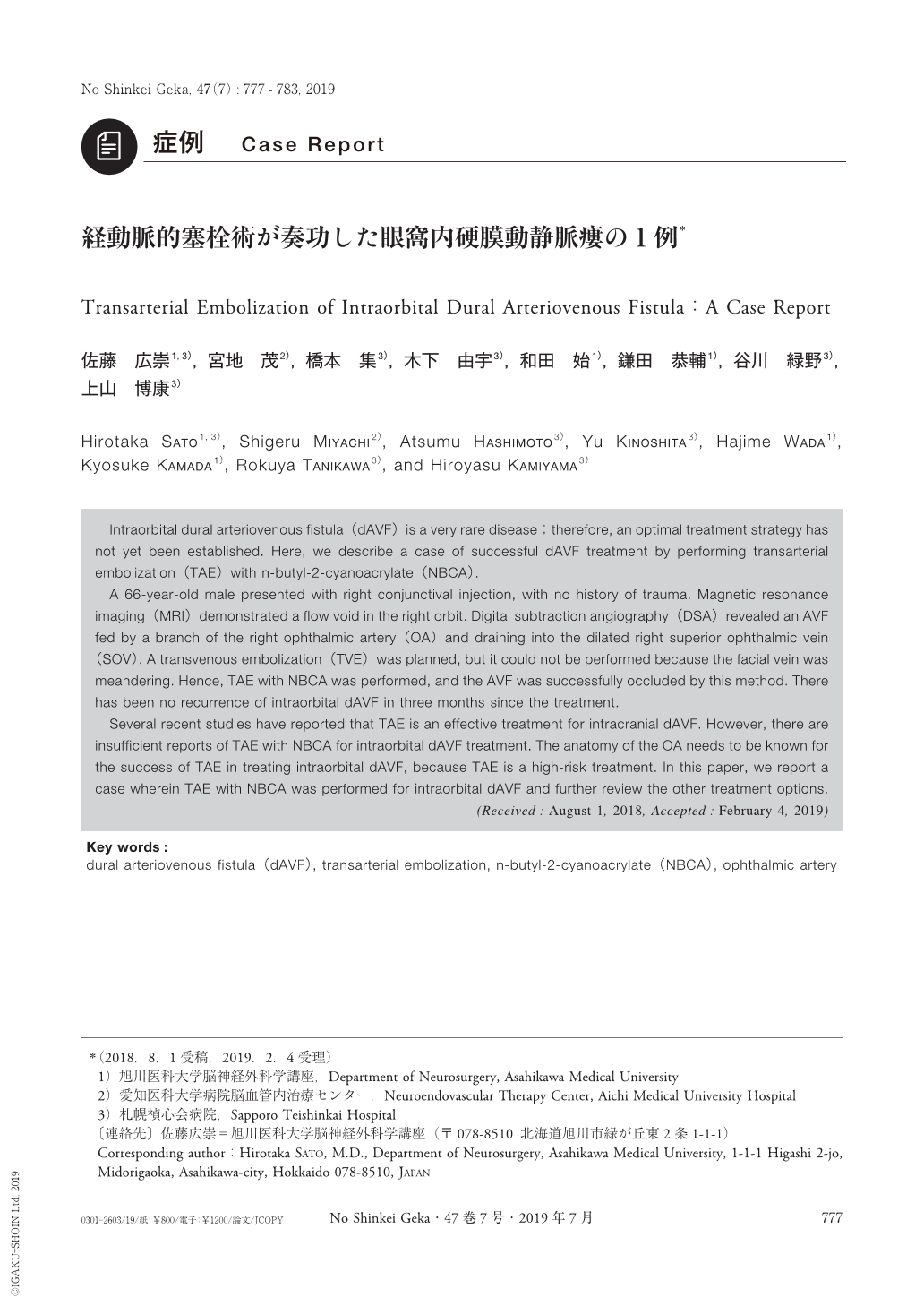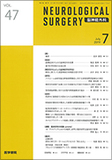Japanese
English
- 有料閲覧
- Abstract 文献概要
- 1ページ目 Look Inside
- 参考文献 Reference
Ⅰ.はじめに
眼窩内硬膜動静脈瘻は文献的報告が少ない稀な疾患であり,硬膜動静脈瘻の中でも非常に珍しいタイプと考えられる.確立した治療法はなく,各施設の判断で症例ごとに治療を行っているのが現状である.
今回われわれは,眼窩内硬膜動静脈瘻に対して,経動脈的塞栓術を行い治癒した1例を経験した.経静脈的塞栓術(transvenous embolization:TVE)が困難な場合には,経動脈的塞栓術(transarterial embolization:TAE)が有効な選択肢と考えられた.今回の症例を踏まえ,眼窩内硬膜動静脈瘻について,過去の文献をまとめて考察したので報告する.
Intraorbital dural arteriovenous fistula(dAVF)is a very rare disease;therefore, an optimal treatment strategy has not yet been established. Here, we describe a case of successful dAVF treatment by performing transarterial embolization(TAE)with n-butyl-2-cyanoacrylate(NBCA).
A 66-year-old male presented with right conjunctival injection, with no history of trauma. Magnetic resonance imaging(MRI)demonstrated a flow void in the right orbit. Digital subtraction angiography(DSA)revealed an AVF fed by a branch of the right ophthalmic artery(OA)and draining into the dilated right superior ophthalmic vein(SOV). A transvenous embolization(TVE)was planned, but it could not be performed because the facial vein was meandering. Hence, TAE with NBCA was performed, and the AVF was successfully occluded by this method. There has been no recurrence of intraorbital dAVF in three months since the treatment.
Several recent studies have reported that TAE is an effective treatment for intracranial dAVF. However, there are insufficient reports of TAE with NBCA for intraorbital dAVF treatment. The anatomy of the OA needs to be known for the success of TAE in treating intraorbital dAVF, because TAE is a high-risk treatment. In this paper, we report a case wherein TAE with NBCA was performed for intraorbital dAVF and further review the other treatment options.

Copyright © 2019, Igaku-Shoin Ltd. All rights reserved.


